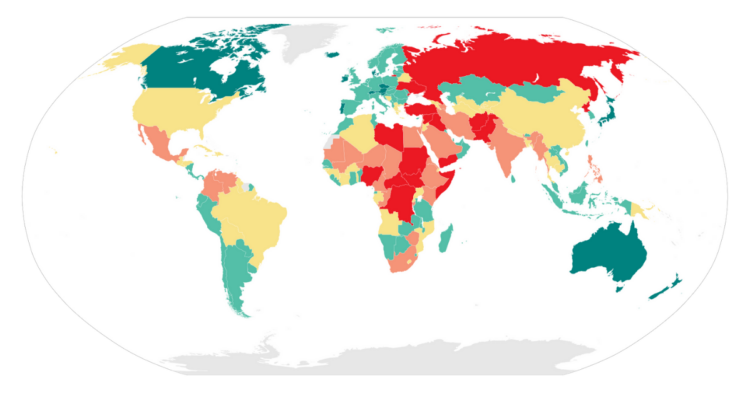I don’t want to say that this is a grim topic, but, well, we’re going to talk about World War 3. Nobody wants to ponder the threat, but if humanity has proven one thing over millenia, it’s our willingness to go to war. Look on the bright side, though — you can prepare yourself by finding out the best places to go.
Warfare has changed a lot in not much time.

The wars of the 20th century set the stage for some of today’s weapons of mass destruction. The use of poisonous gas was pioneered to devastating effect in World War 1, while World War 2 ended with the atomic bomb.
There’s tension all over the world.

The U.S. has relatively frequent spats with both Russia and North Korea, while India and Pakistan are two neighbors with a historically uneasy relationship. All five countries mentioned here have nuclear capabilities.
How close are we to doomsday?
Members of The Bulletin of American Scientists use the Doomsday Clock as a way to estimate how close we are to World War 3. Right now it sits at just two minutes to midnight/global catastrophe.
What areas are most dangerous?

Experts from a variety of influential think tanks have created the Global Peace Index to measure how safe a given country is. The map, above, shows safer countries in green and less safe ones in red, orange and yellow.
Where to flee?
You can take steps to isolate yourself from the carnage if World War 3 broke out. But because you might not have the means to travel far, where you go depends on where you are.
Ireland

Owing to sectarian violence, Ireland was not a safe place in the 90s. But it’s improved significantly and is now ranked tenth safest country in the world — an ideal refuge for people from the United Kingdom.
Austria

France and Italy always seem to get invaded during wartime, so people in these countries could shoot for Austria, which is considered the third safest country in the world, and second most peaceful in Europe.
Singapore

India and Pakistan could be a powderkeg, so for people looking to get away, Singapore is a decent option. It’s considered extremely safe, thanks in part to a brutal crackdown on crime.
Denmark

Denmark, which sits immediately to the north of Germany, is ranked as the fifth safest country in the world. It’s almost like a safety valve for other countries in continental Europe.
Czech Republic

Eastern Europe could be a focal point of a war between Russia and the west, but Czech Republic is relatively peaceful and hasn’t seen much terrorism in recent years, unlike its European neighbors.
Canada

The two biggest countries here, Canada and the United States, vary quite a bit in terms of peacefulness. If you’re in Canada, you’re good. But if you’re in the U.S., you might want to head north.
Japan

Since its military was taken apart following World War 2, Japan has become a hub for industry and peace. It’s the ninth safest country in the world, and has extremely low rates of violence.
New Zealand

Australia’s safe, but its south Pacific neighbor New Zealand is even safer. Both nations are surrounded by oceans, which give them a significant advantage (and buffer zone) during times of conflict.
Portugal

Its neighbor Spain has seen conflict over the years, but Portugal has kept things relatively uneventful. It’s ranked as the fourth most peaceful country in the world, showing big improvements in recent years.
Where to avoid?
If you see a mushroom cloud, run away from it. Other than that, be wary of traveling to the Middle East and Africa, as they’re two regions with a low peace rating. h/t: Global Peace Index



















































